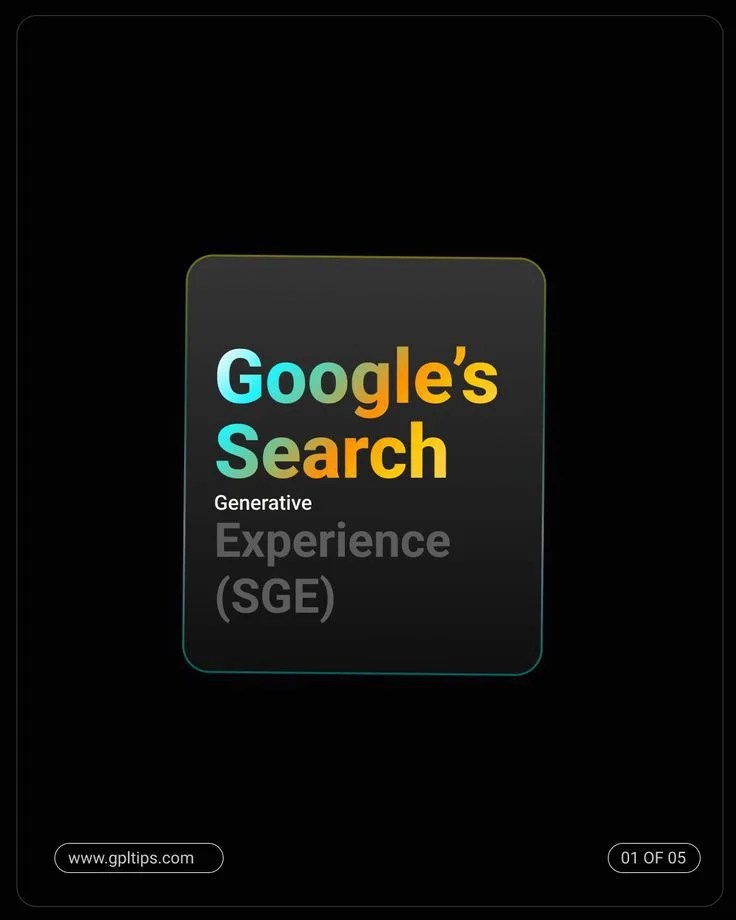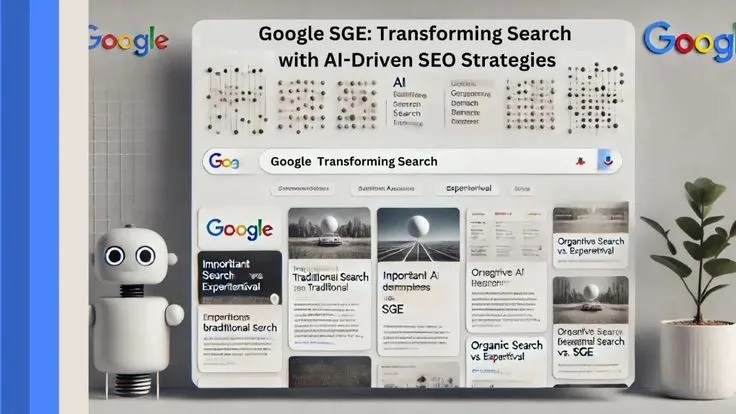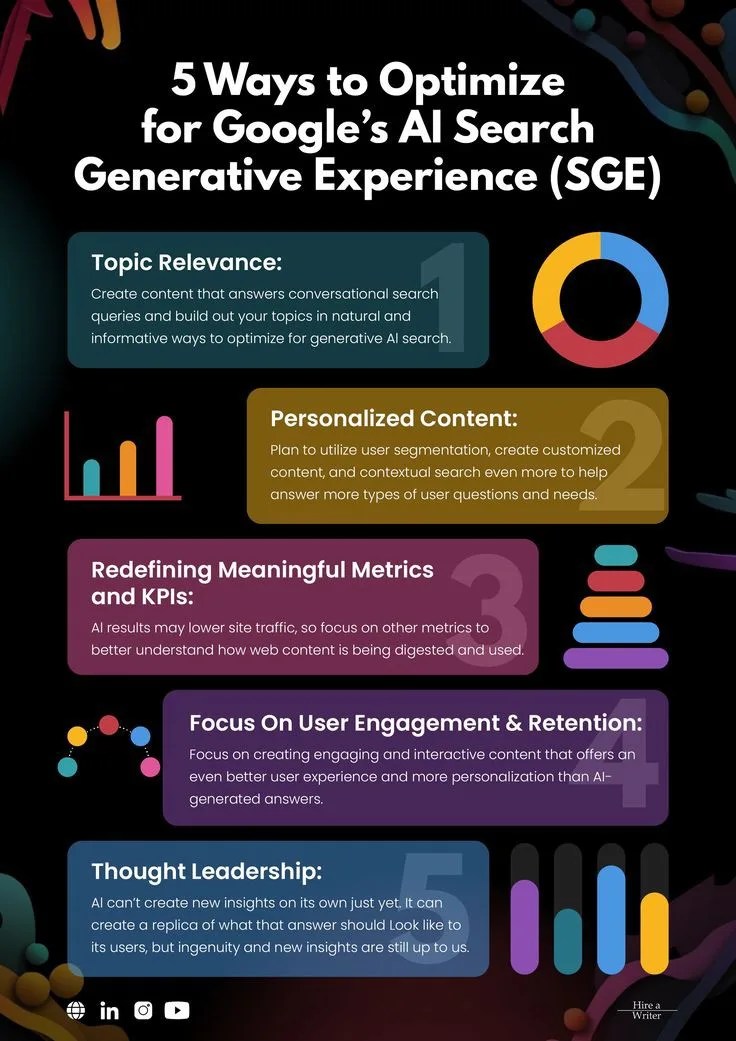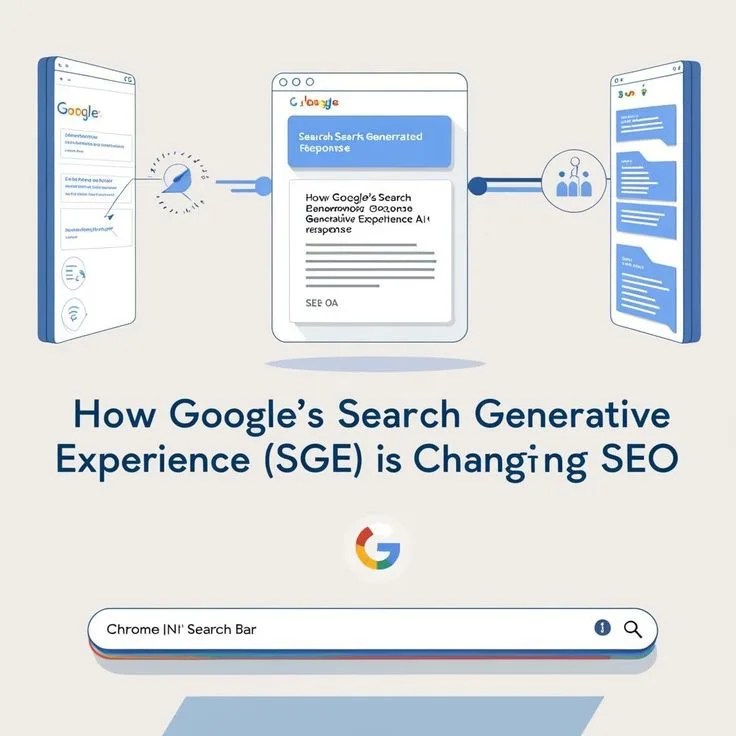As Google’s Search Generative Experience (SGE) continues to evolve, it’s changing the way content is ranked, especially for tech blogs. Understanding how to optimize for this new AI-driven search feature is essential for staying ahead in the game. SGE introduces generative AI elements directly into search results, providing users with a more personalized and dynamic browsing experience. This shift impacts how your content is discovered, making it more crucial than ever to adopt new strategies.
Table of Contents
What Is Google’s Search Generative Experience (SGE)?
Google’s Search Generative Experience is a new AI-powered feature that integrates generative elements into search results. It enhances traditional search by generating detailed answers and summaries, often based on user queries, rather than simply displaying a list of links. This results in more interactive and personalized search experiences.
SGE relies heavily on AI and machine learning to process queries and provide tailored responses, making it essential for content creators to adapt to these changes to ensure their blogs remain visible and rank highly.

How SGE Impacts Tech Blogs
1. Shift from Traditional Search Results to Dynamic Content
SGE moves beyond the standard organic links, integrating rich answers, and in some cases, creating entirely new content for the user. For tech blogs, this means that ranking might depend not only on keywords and backlinks but also on how relevant and comprehensive your content is for a given query.

2. Increased Importance of Answering Questions Directly
The nature of SGE is that it provides concise, direct answers. This makes it crucial for tech blogs to write content that directly addresses common queries and technical problems. FAQs, how-tos, and comprehensive guides are perfect for this.
3. More Focus on User Intent
With the help of AI, Google’s SGE analyzes the user’s intent much better. This means that tech blogs must shift their content to align with the specific needs and expectations of their audience, offering not just information, but solutions.
Strategies to Optimize for Google’s SGE
1. Focus on Conversational Content
As SGE is powered by AI that understands natural language, it’s crucial to write content in a more conversational tone. Use clear, straightforward language that directly addresses user queries.
2. Include Rich, Structured Data
Implementing structured data, like schema markup, helps Google’s AI understand the context and structure of your content better. This enables the content to be more effectively integrated into SGE’s AI-generated responses.

3. Answer User Queries with Comprehensive Guides
SGE thrives on providing detailed responses. Therefore, creating comprehensive, well-researched, and user-friendly guides or tutorials will make your blog more likely to be selected for AI-generated answers.
4. Optimize for Featured Snippets
Featured snippets are often a source for SGE’s generated responses. Structuring content to answer specific questions in concise, bullet-point formats will improve the chances of appearing in a snippet and boosting your rankings.
5. Prioritize Content Quality Over Quantity
In the age of AI-driven search, quality matters more than ever. Ensure that your content is not only keyword-optimized but also offers real value to readers, answering their questions in-depth.

6. Keep Your Content Updated
AI relies on the most up-to-date information. Regularly updating your content to reflect new trends, technologies, and best practices in the tech world ensures that your blog remains relevant and authoritative in the eyes of SGE.
How to Structure Content for SGE Optimization
1. Answer Questions Immediately
Ensure that the first paragraph or two of your blog post directly answers the query. SGE tends to pull information from the most concise, relevant sections.
2. Use Clear Headings and Subheadings
Clear and descriptive headings not only help users navigate your content but also help AI understand your article’s structure. Make your subheadings informative and use them to break down content into digestible chunks.

3. Optimize for Voice Search
As SGE will likely prioritize conversational queries, optimizing for voice search is key. Incorporate natural, question-based phrases that users might use when speaking, such as “What are the best coding languages for beginners?”
4. Create Long-Form Content with Depth
SGE values content that provides comprehensive, in-depth information. Long-form content, such as ultimate guides or detailed case studies, is more likely to get featured in AI-generated snippets.
5. Provide Visuals and Multimedia
Adding infographics, videos, and diagrams can enhance the quality of your content, making it more engaging and more likely to be featured in search results powered by SGE.

The Future of SEO with SGE
SGE is shaping the future of search engine optimization by making the search process more dynamic, personalized, and interactive. The integration of generative AI in search results will continue to influence how content is ranked and displayed, putting more emphasis on user intent, content relevance, and quality.
For tech bloggers, it’s essential to stay ahead of these changes by continuously optimizing for AI-driven features like SGE. By doing so, you’ll not only improve your chances of ranking but also enhance user experience by providing accurate, valuable, and timely information.
Final Thoughts
Adapting your tech blog for Google’s Search Generative Experience is no longer optional. As AI-powered search becomes more prevalent, ensuring that your content aligns with SGE’s focus on comprehensive, user-centric answers will set you apart from the competition. By optimizing your content, focusing on user intent, and providing high-quality, well-structured material, you’ll improve your chances of ranking higher and providing meaningful value to your readers.
FAQs 
1. What is the primary goal of Google’s Search Generative Experience?
SGE aims to deliver more accurate, personalized, and dynamic search results by integrating generative AI into the process.
2. How does SGE affect SEO?
SGE shifts SEO by prioritizing content relevance, user intent, and direct answers to queries, requiring more focus on providing high-quality, structured content.
3. Do I need to use AI tools to optimize for SGE?
While AI tools can help analyze and optimize content, the key to ranking in SGE is creating high-quality, user-focused content that answers specific queries.
4. How can I structure my content to rank in SGE?
Structure your content with clear headings, concise answers to questions, and detailed, well-researched information to increase your chances of being featured in AI-generated responses.
5. Is SGE only useful for tech blogs?
No, SGE can impact any type of content. However, tech blogs are well-positioned to benefit due to the increasing demand for in-depth, technical, and timely information.




